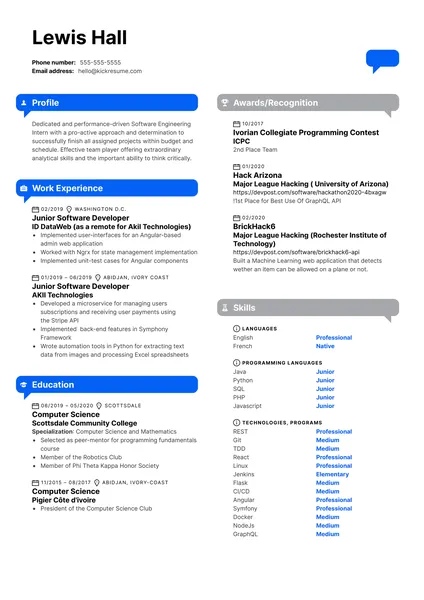Crafting a Compelling Software Engineering Intern Cover Letter
Landing a software engineering internship is a significant step towards a successful career. A well-crafted cover letter is your first opportunity to make a strong impression on potential employers. It goes beyond simply reiterating your resume; it provides a platform to showcase your personality, passion for software engineering, and the unique value you can bring to the company. This article will guide you through the essential steps in creating a cover letter that grabs attention and increases your chances of securing an interview. We will cover everything from the fundamental purpose of a cover letter to the key components, formatting tips, and actionable strategies to make yours stand out from the crowd. Remember, your cover letter is not just a formality; it’s a marketing tool that can set you apart and demonstrate why you are the ideal candidate for the internship.
Understanding the Purpose of a Cover Letter
The primary purpose of a cover letter is to introduce yourself and express your interest in a specific software engineering internship. It’s your chance to communicate why you are the perfect fit for the role, demonstrating your enthusiasm and alignment with the company’s values and goals. Unlike your resume, which provides a factual overview of your skills and experiences, your cover letter allows you to tell a story, explain your motivations, and highlight how your unique background and experiences align with the specific internship requirements. It also gives you the opportunity to demonstrate your communication skills and professional writing style, which are crucial in any software engineering role. A well-written cover letter can significantly improve your chances of getting your resume read, making it an essential component of your application package. Use the cover letter to go beyond listing skills, and to explain your thought process and motivation.
Highlighting Your Key Skills and Experiences
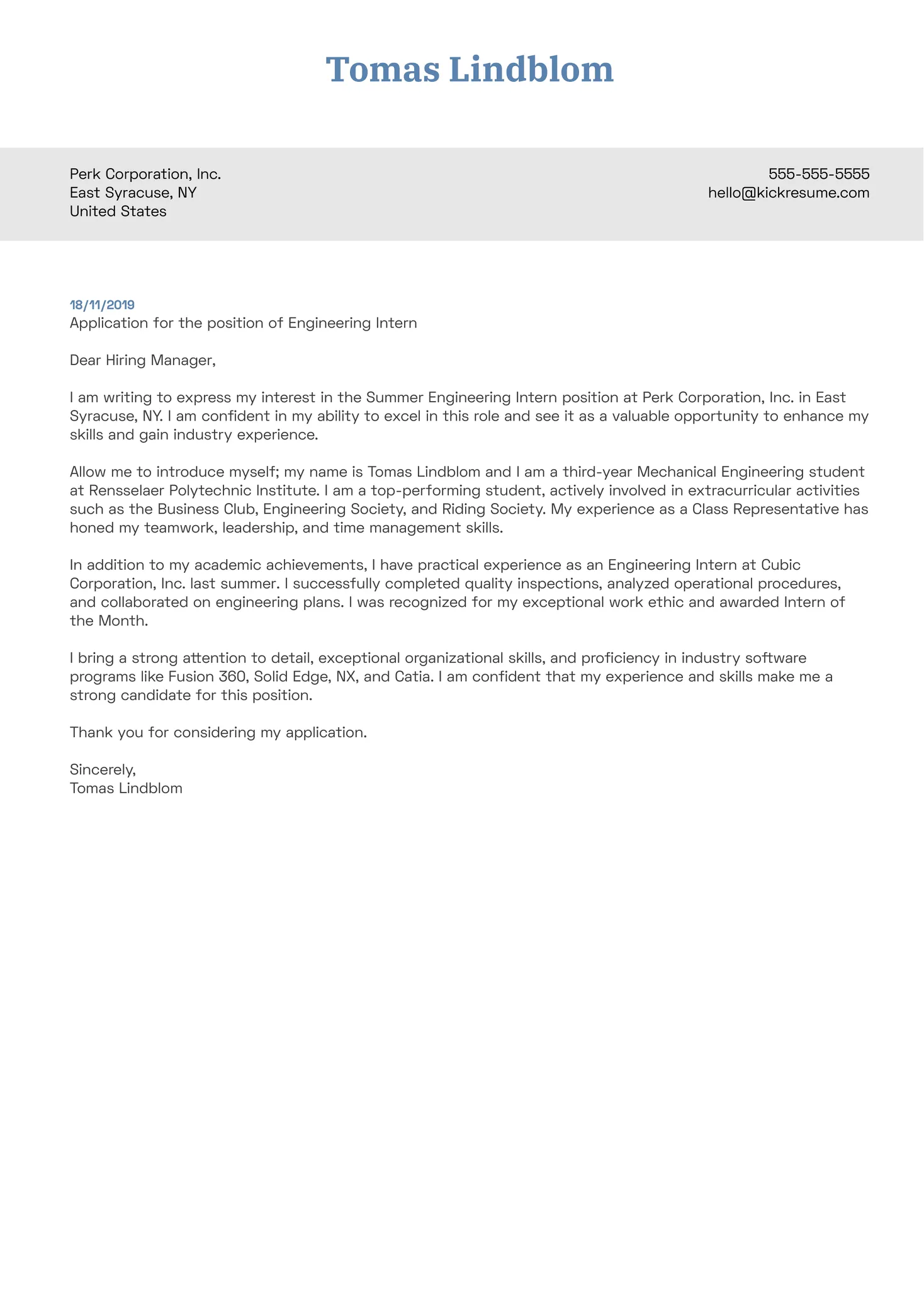
When crafting your cover letter, focus on the skills and experiences that are most relevant to the software engineering internship you are applying for. Carefully review the job description to identify the key skills the employer is seeking. These might include programming languages like Java, Python, or C++, experience with software development methodologies such as Agile, or familiarity with specific tools and technologies. Provide concrete examples that demonstrate how you have used these skills in the past. Did you contribute to a project that utilized a specific programming language? Describe your role, the challenges you faced, and the solutions you implemented. Quantify your achievements whenever possible; for instance, state the percentage by which you improved code efficiency or the number of users your project served. This detailed approach allows the employer to understand the practical value of your skills.
Tailoring Your Cover Letter to the Internship
One of the biggest mistakes job applicants make is sending generic cover letters. To get noticed, you must tailor each cover letter to the specific internship and the company. Begin by researching the company’s mission, values, and recent projects. Demonstrate your understanding of their work and explain why you are excited about the opportunity to contribute. In the letter, highlight the specific aspects of the role that interest you and how your skills align with those responsibilities. This personalization shows the hiring manager that you are genuinely interested in the position and have taken the time to understand their needs. Consider addressing the cover letter to a specific person, such as the hiring manager or the team lead, if you can find their name. This level of detail shows initiative and attention to detail, which can significantly improve your chances.
Key Components of a Standout Cover Letter
Personalizing Your Introduction
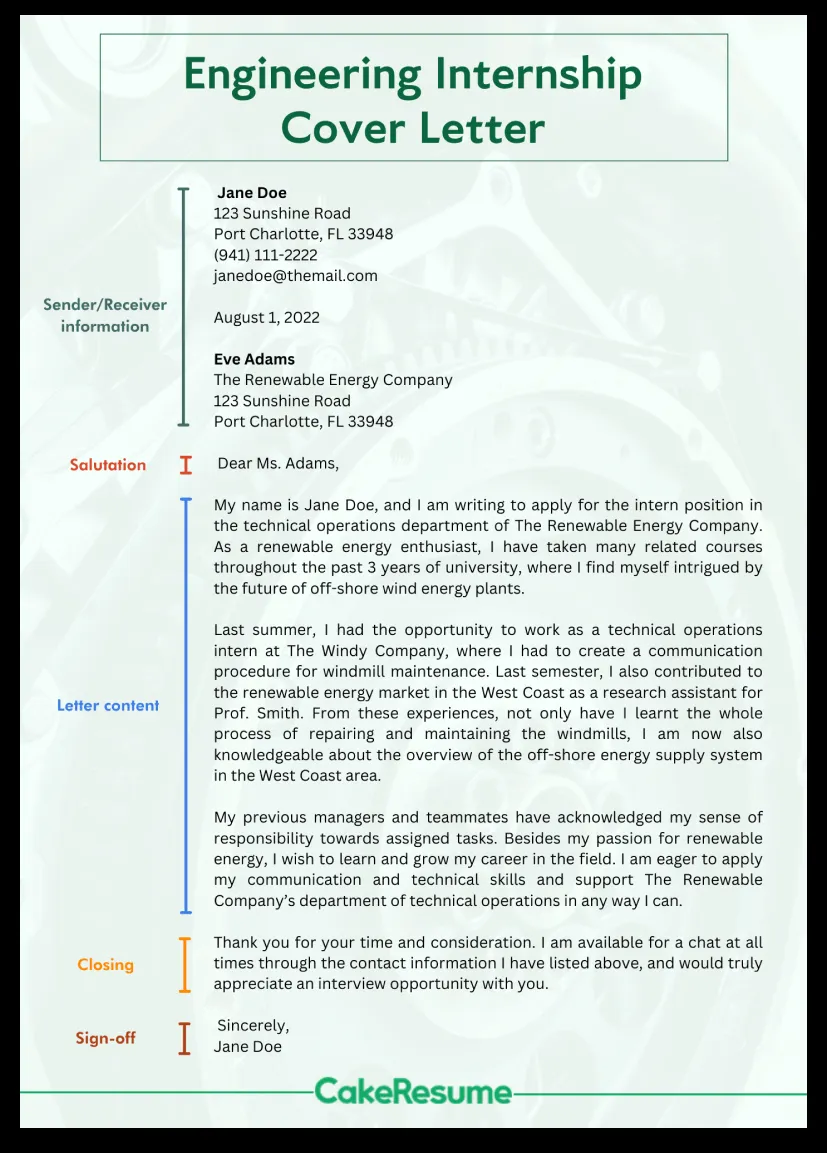
Your introduction is your first opportunity to make a strong impression. Avoid generic opening lines such as ‘I am writing to express my interest…’ Instead, start with a compelling hook that grabs the reader’s attention. Briefly mention where you saw the job posting and why it caught your eye. State your passion for software engineering and why you are excited about the opportunity. Mention something specific that interests you about the company or the role. For example, you could reference a recent project the company released or a specific technology they are using. Be clear and concise in stating the position you are applying for. A personalized introduction makes your cover letter more memorable and shows that you are a proactive candidate. It helps to separate you from the many applications the hiring manager will likely read. Ensure you clearly state what you are applying for and why you are a good fit.
Showcasing Relevant Technical Skills
In the body of your cover letter, highlight the technical skills that align with the job requirements. Review the job description and identify the key skills the employer is seeking. Mention the specific programming languages, tools, and technologies you are proficient in. Do not just list your skills; provide brief examples of how you have used them in projects or coursework. If you have contributed to any open-source projects, be sure to mention them, and include links to your GitHub or other relevant profiles. The more specific you are, the better. For instance, instead of saying ‘I am familiar with Java,’ you could say, ‘In my project, I utilized Java to develop a backend system, and it improved the efficiency of the existing system by 20%.’ Back up your skills with real-world examples.
Demonstrating Your Passion for Software Engineering
Show your passion for software engineering throughout your cover letter. Share what inspires you about the field and why you are pursuing an internship. This could be your fascination with creating innovative solutions, your interest in solving complex problems, or your enthusiasm for the company’s work. Mention any personal projects or extracurricular activities related to software engineering. Did you participate in a hackathon? Did you build a website or mobile app on your own? Explain how these experiences have fueled your passion. This is your chance to show your personality and enthusiasm. Passion is contagious, and expressing it can make your application more appealing. Your enthusiasm can make you stand out among candidates with similar skills.
Emphasizing Your Accomplishments and Projects
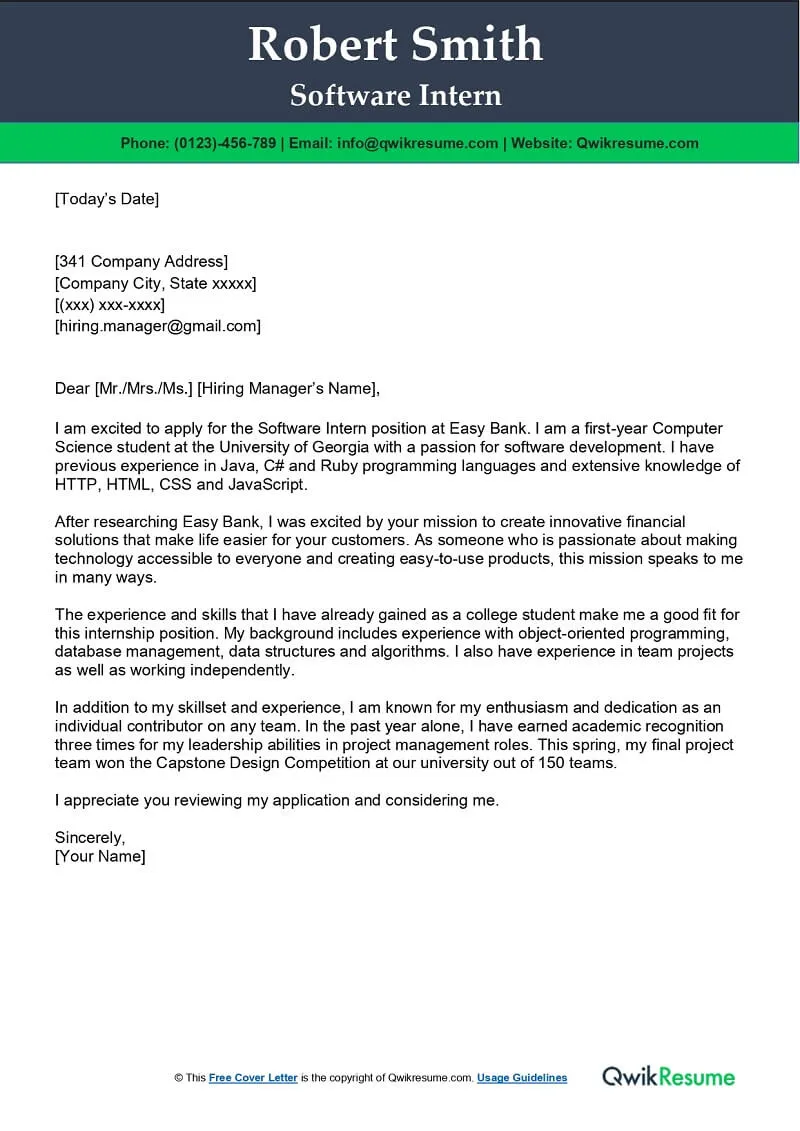
Highlight your accomplishments and the projects you have worked on. Briefly describe the projects that demonstrate your skills and experience, and make sure to focus on results. Instead of just listing your responsibilities, mention what you achieved. Did you lead a team? Did you improve the performance of a system? Quantify your achievements whenever possible. For example, mention the percentage by which you improved code efficiency or the number of users your project served. Include links to your online portfolio, GitHub, or any other platforms where your projects are showcased. Providing tangible evidence of your skills is one of the best ways to impress a potential employer. Project-based evidence proves you understand software engineering beyond the basic coursework.
Writing a Strong Closing
Your closing should reiterate your interest in the internship and thank the hiring manager for their time and consideration. Summarize why you are a strong fit for the role and what you hope to achieve during the internship. Be sure to include a call to action. Indicate your availability for an interview and provide your contact information, including your phone number and email address. Proofread your closing carefully to avoid any typos or grammatical errors. A strong closing leaves a lasting impression and encourages the hiring manager to take the next step. Make it easy for them to contact you. Always thank the reader for considering you for the position.
Formatting and Presentation Tips
Choosing the Right Font and Font Size
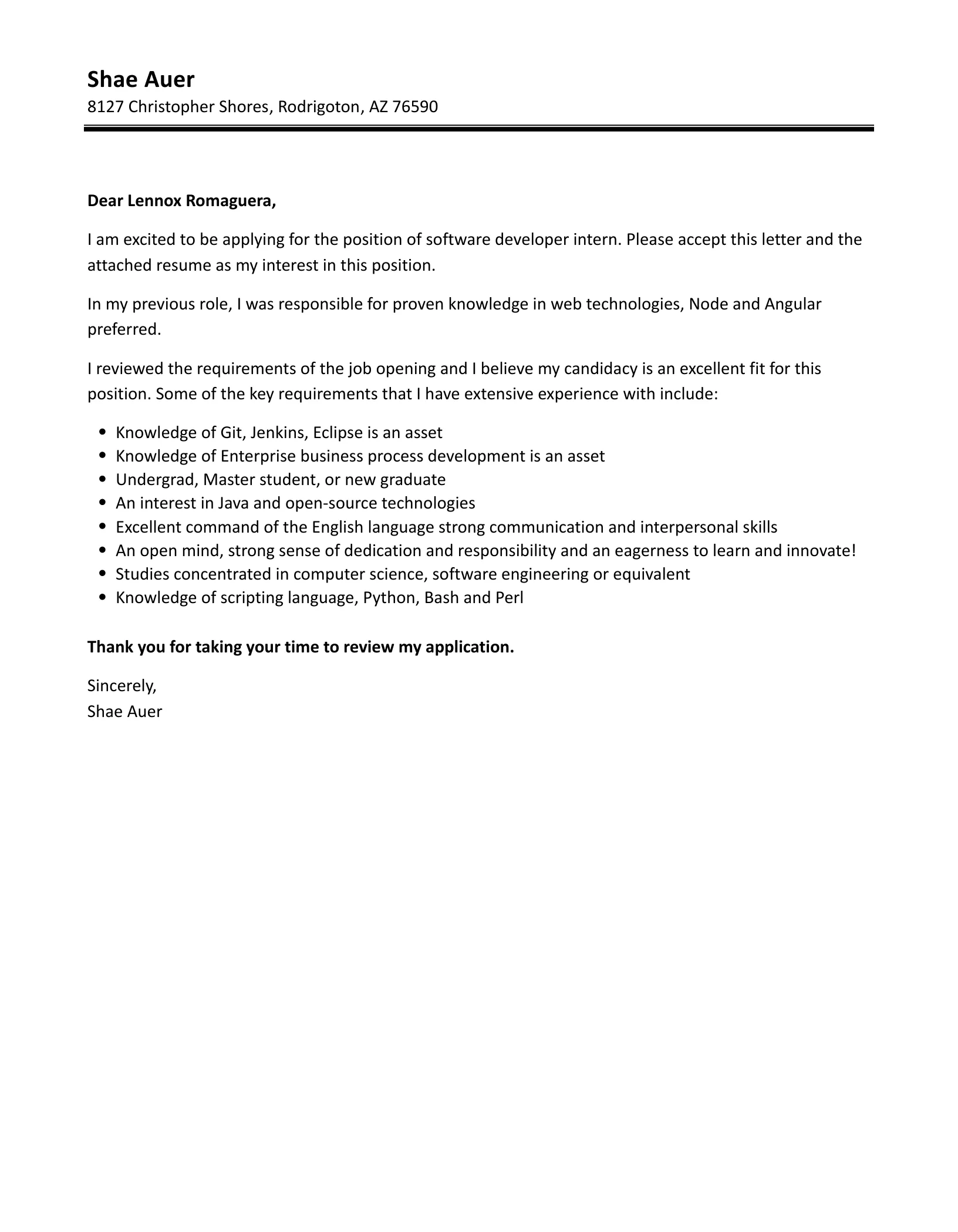
The font and format of your cover letter can significantly impact its readability and visual appeal. Choose a professional and easy-to-read font such as Times New Roman, Arial, or Calibri. Maintain a consistent font size of 11 or 12 points throughout the document. Use clear formatting, including headings, subheadings, and bullet points, to break up the text and make it easier to scan. Ensure consistent spacing between paragraphs and use left alignment. Avoid using excessive colors or graphics, which can distract the reader. Your goal should be a clean, professional-looking document that is easy to read at a glance. Your choice of font speaks volumes about your personality and attention to detail.
Ensuring Proper Grammar and Spelling
Poor grammar and spelling can immediately undermine your credibility. Before submitting your cover letter, carefully proofread it to eliminate any errors. Use a grammar and spell-checking tool, but do not rely on it entirely. Read the letter aloud to catch any awkward phrasing or typos that you might miss when reading silently. Ask a friend, professor, or career counselor to review your cover letter as a second pair of eyes. A polished and error-free cover letter shows that you pay attention to detail and have strong communication skills, both essential qualities for a software engineer. Proofreading shows employers that you care about your work and are professional.
Keeping Your Cover Letter Concise and Focused
Hiring managers often have limited time to review applications, so it’s essential to keep your cover letter concise and focused. Aim for a length of one page. Avoid including unnecessary details or irrelevant information. Every sentence should contribute to your goal of demonstrating your suitability for the internship. Focus on the most important skills, experiences, and accomplishments that align with the job requirements. Get to the point quickly and make every word count. Use clear and direct language to communicate your message effectively. Concise cover letters are more likely to hold the reader’s attention and make a stronger impact.
Proofreading and Editing Your Cover Letter
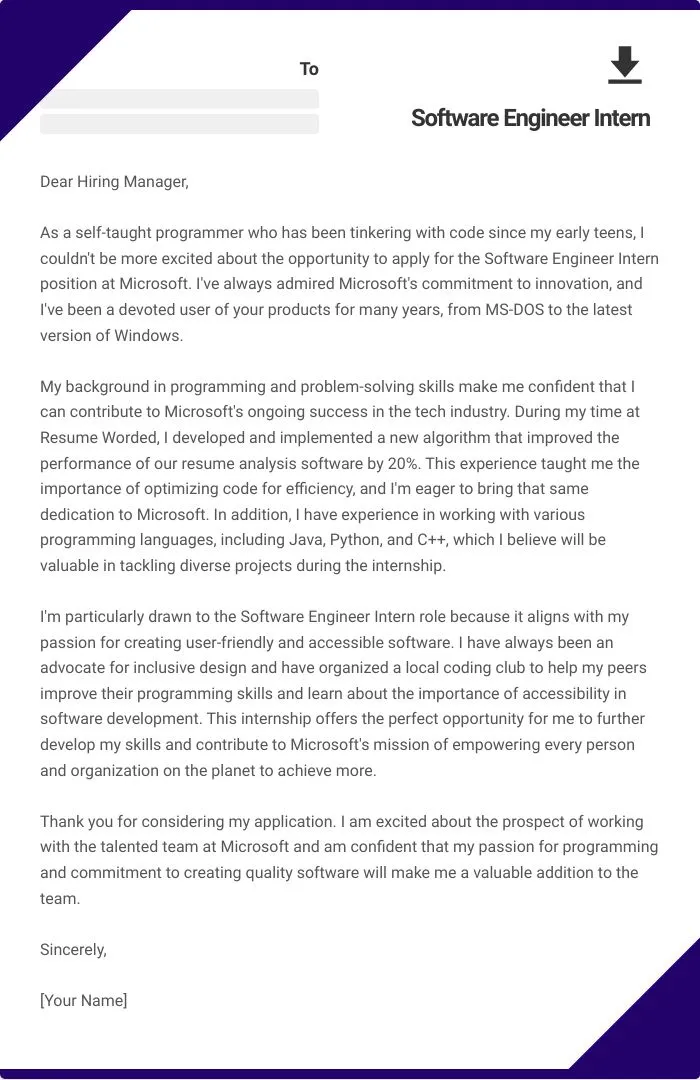
Thorough proofreading and editing are crucial steps to ensuring your cover letter is error-free and polished. After writing your cover letter, take a break and come back to it with fresh eyes. Read the letter aloud to catch any awkward phrasing or typos. Pay close attention to grammar, spelling, punctuation, and sentence structure. Make sure your language is clear, concise, and professional. Consider having a trusted friend, mentor, or career advisor review your cover letter for feedback. They can provide valuable insights and help you identify any areas that need improvement. A well-edited cover letter demonstrates your attention to detail and commitment to excellence. Take pride in your work and make sure you present yourself in the best possible light. Proofreading is a crucial step, and should not be skipped.
Actionable Steps to Make Your Cover Letter Stand Out
Researching the Company and the Role
Before you start writing, conduct thorough research on the company and the specific software engineering internship. Visit the company’s website, read their blog posts, and review their social media profiles to understand their mission, values, and recent projects. Familiarize yourself with the specific requirements of the internship, including the technologies and skills they are seeking. This research will enable you to tailor your cover letter effectively and demonstrate your genuine interest in the position. Mentioning specific projects or initiatives the company is involved in shows that you have taken the initiative to learn about them. Research makes your cover letter more compelling.
Using Keywords Effectively
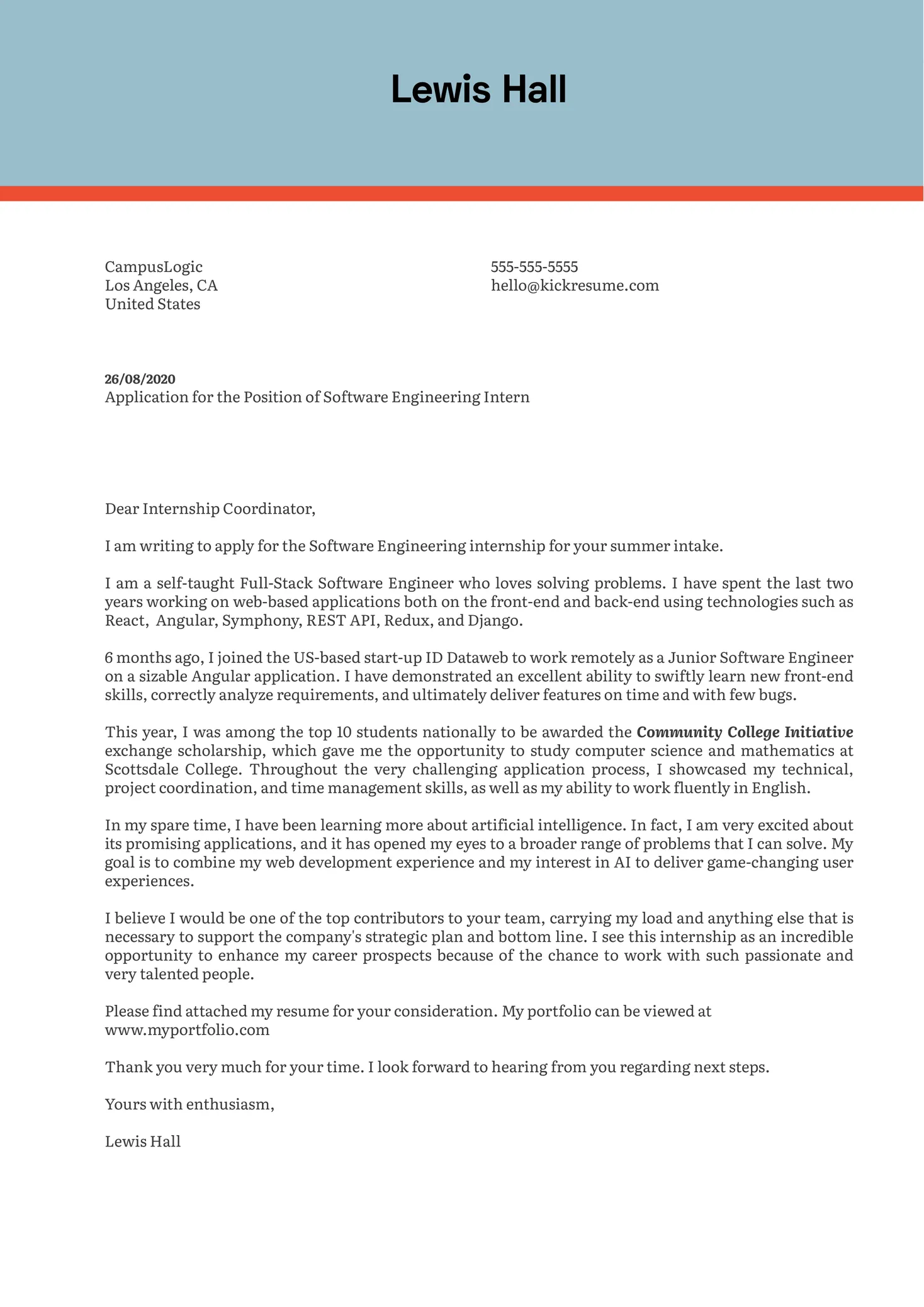
Many companies use Applicant Tracking Systems (ATS) to scan resumes and cover letters for relevant keywords. To ensure your cover letter gets noticed, incorporate keywords from the job description throughout the text. Use the same terminology the company uses to describe the required skills and qualifications. However, avoid keyword stuffing, which can make your cover letter sound unnatural. Instead, weave the keywords into your sentences naturally and strategically. Focus on relevant skills and achievements while showing a good understanding of the job description. Properly using keywords increases the chances of your cover letter being selected for human review.
Quantifying Your Achievements
When describing your accomplishments, quantify your results whenever possible. Instead of saying ‘I improved the website,’ say, ‘I improved the website’s loading speed by 25% by optimizing the image compression.’ Use numbers and data to illustrate the impact of your contributions. This gives the hiring manager a clear understanding of your capabilities and the value you can bring to the company. Quantifiable results are more persuasive and demonstrate the real-world value of your skills and experiences. Quantification separates you from other candidates.
Including a Call to Action
End your cover letter with a clear and concise call to action. Express your interest in an interview and reiterate your availability. Provide your contact information, including your phone number and email address, to make it easy for the hiring manager to reach you. Thank the hiring manager for their time and consideration. A strong call to action ensures the hiring manager knows how to proceed and increases your chances of being contacted for an interview. Make the next step easy for them. A good call to action shows your proactiveness.
